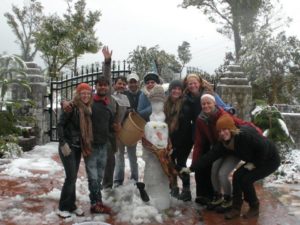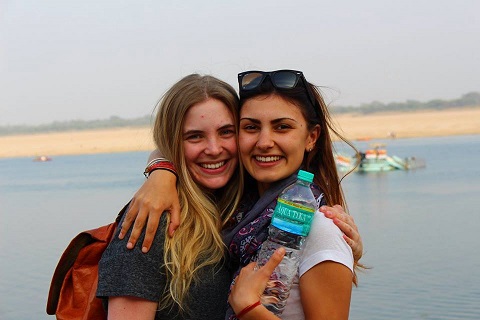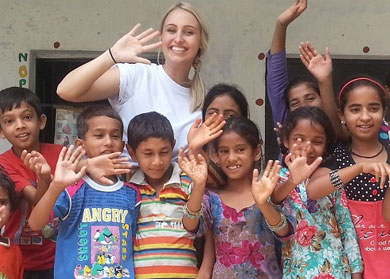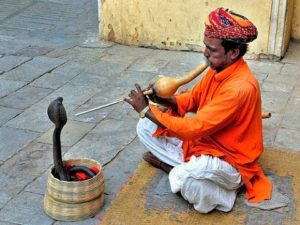Things Your Parent thought you about Gap Year in India.

India is a country that most people have never visited, but most of us think we know something about what the country is like. Thanks to various types of media exposure, it’s easy to have an idea of what we think that India is– but it’s also easy for a few myths to creep in there, too.
When you raise the idea of a gap year in India to your parents, it’s more than likely you will hear a few of these conceptions about what travelling in India entails.
There’s a good chance that your parents will tell you a few things about to expect, whether or not you should visit, and what to look out for.
If your parents have travelled in India for themselves, then this could be valuable advice that you’re going to want to take note of.
However, there’s always the risk that your parents have a few misconceptions about India too, based on media and news information about the country.
So before you finalize your plans, it’s worth taking the time to think through some of these myths, beliefs, and reported experiences about travelling in India and figuring out which you can actually rely upon.
Below are nine things your parents might have taught you about the idea of a gap year in India, so read on to find out which points have some merit… also visit volunteerindiaispiice.com for more information.
#1 – The food is very different to what you might expect.

If you have been told that India is not all about curry, then you can be rest assured this is 100% accurate. India is a country of many different cuisines; curry is just another dish that you may want to try during your stay there.
Many people expect that India will offer curry, more curry, and not much else, but no country can exist on such a limited diet.
India has a wide range of different foods, many of which are vegetarian, that you will be able to sample. It’s more than possible to visit India and not eat a single dish of curry if you prefer!
So while you can get a great curry in India, if you’re not a fan, don’t worry: there’s plenty of other options you’re going to be able to enjoy.
#2 – Don’t drink the water.

This is another fact you may have been told that is, once again, absolutely accurate. The water sanitation situation in India is very different to that with which your western body has become familiar; as a result, you’ll likely experience health issues, such as stomach upsets, if you drink water directly from the tap. It is therefore advisable to follow this advice to the letter.
You will still be able to keep yourself hydrated by taking advantage of the many options for bottled water.
If you’re going to be travelling in a rural area where stores may be few and far between, then taking along a few water purification tablets is an excellent decision that you’ll be very thankful you made.
#3 – Your worldview will be forever changed.

If your parents have travelled in India, they will likely have described it as “life-changing” or as an experience that “put everything into perspective”.
While these views are, obviously, subjective, for the most part it seems that India truly is a life-changing country to visit.
It’s easy to see why this is the case. The culture is vastly different from the one you grew up in; you will be exposed to poverty on a huge scale; and will see the world differently if you choose to volunteer with those less fortunate than yourself.
One thing you can be sure of is that the change to your worldview will ultimately be for the better, allowing you to see the global situation with a new clarity.
#4 – You’ll be a better person for spending time in India.

As mentioned above, the way that your perspective changes having visited India is predominantly a positive one. As a result, many tourists to the country find that they feel they are a better person thanks to the time they spent in the country.
It’s impossible to predict whether this will be the case for you, but there’s no doubt it’s likely on the balance of probability.
When you see a country so very different from your own, you gain a wealth of experience and understanding that can ultimately make you a kinder, more engaged, and more compassionate person when you return to your home country.
#5 – It’s a very spiritual country.

Many people expect a hugely spiritual experience when they travel to India. After all, India is the home of yoga, Buddhism, and spirituality on a grand scale; the media portrayal of the country makes it easy to assume that every Indian citizen is a yoga master and lives with an endless supply of peace, love, and tolerance.
There’s no denying that India is a spiritual country, so that part of the myth is accurate.
However, it’s far from the defining reality of life in India. Spirituality may be more common in India than in other countries, but it is not a necessity, and you will only find your time in the country spiritual if you directly seek out spiritual retreats and practices during your visit.
#6 – You’ll be welcomed by the locals.

India is often described as a very welcoming country that is friendly to tourists. For the most part, this is entirely accurate. Tourism is a vital part of the Indian economy, and many major cities go out of their way to ensure they are an attractive destination for overseas visitors.
In more rural areas, you can also expect a warm welcome. Rural areas may have less exposure to non-native citizens, meaning you may attain a kind of “alien” interest that makes people want to know more about you. Embrace this and any hospitality that is offered to you; it’s all friendly and good-spirited, and will help you feel right at home.
#7 – The weather is always hot.

India is indeed a hot country, at least on average, but it’s vital to know the climate of the specific area you are visiting. The closer you get to the Himalayas, for example, the more likely it is you’ll need winter-specific clothing rather than the expected summer outfits.
There is no “Indian climate” that applies to the entire country; the country is vast, so the climates change depending on the geographical location.
It’s also worth remembering that India suffers a monsoon season; a period during which rainfall is greatly increased..
You might think that this helps to lower the temperature, but monsoon temperatures tend to remain high due to the humidity the extra water creates.
So while India is generally considered to be a hot country, don’t expect non-stop heat! Check the forecast for the area you are visiting, and take particular care if you’re planning to travel during the monsoon season of July through to September.
#8 – India is overpopulated and busy.

The western image of India tends to be based around the cities and, especially, Delhi. The images we see are crowded streets packed with people and almost no room to move– so you may have been told to expect the same if you’re planning a visit to the country.
The truth is that India does have a large population — over 1.2 billion people in fact — but a large population only causes an issue if the population is dense. India does quite well in this regard; it is the 33rd in the list of population density, so the country is nowhere near as overcrowded as you might be expecting.
India does have a large population, but this population is spread throughout a huge country, so overcrowding is not a problem you are likely to experience.
The cities are busy, but this is true of anywhere in the world of course!
#9 – You’ll see snake charmers.

You are most likely to hear this from your parents if they have never visited India, or only taken short tourist trips.
Most people tend to associate India with snake charmers; while this isn’t strictly untrue, it’s also unlikely.
Snake charming in modern India is primarily a show put on for the tourists. You’ll see plenty of snake charmers around major landmarks and in big cities with a high number of tourists, but in the rest of the country… not so much.
You are more likely to need to seek out a snake charmer than stumble across one, so if you’re afraid of snakes, you don’t have to worry about encountering one at every turn!
In conclusion.
India is a vast, diverse country that has plenty to offer a gap year traveller. While you cannot guarantee what you will experience or feel, reading through the above should provide some insight into what you can truly expect from your time spent in the country.
Enjoy your travels, and see what other tidbits of information you pick up during your visit.
Visit iSpiice for More Information for your next Gap Year India Trip.

